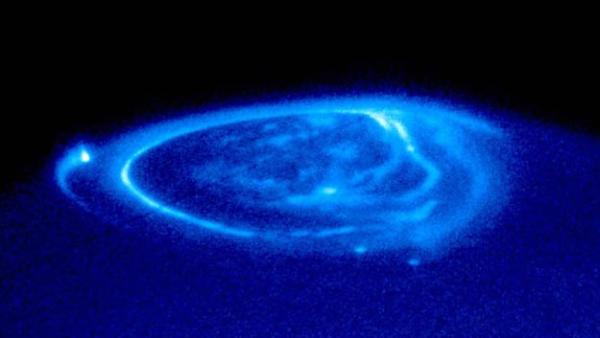A Close Up of Aurora on Jupiter

Explanation:
Jupiter has
aurorae.
Like
Earth, the
magnetic field of the gas giant funnels
charged particles released from the Sun
onto the poles.
As these particles strike the atmosphere,
electrons are temporarily knocked away from existing gas
molecules.
Electric force attracts these electrons back.
As the
electrons recombine to remake neutral molecules,
auroral light is emitted.
In the
above recently released photograph by the
Hubble Space Telescope taken in
ultraviolet light, the
aurorae
appear as annular sheets around the pole.
Unlike
Earth's aurorae,
Jupiter's aurorae include
several bright streaks and dots.
These marks are caused by magnetic flux tubes connecting
Jupiter to its
largest moons.
Specifically,
Io
caused the bright streak on the far left,
Ganymede
caused the bright dot below center, and
Europa caused the dot to its right.
Authors & editors:
Robert Nemiroff
(MTU) &
Jerry Bonnell
(USRA)
NASA Web Site Statements, Warnings,
and Disclaimers
NASA Official: Jay Norris.
Specific
rights apply.
A service of:
LHEA at
NASA /
GSFC
& Michigan Tech. U.

